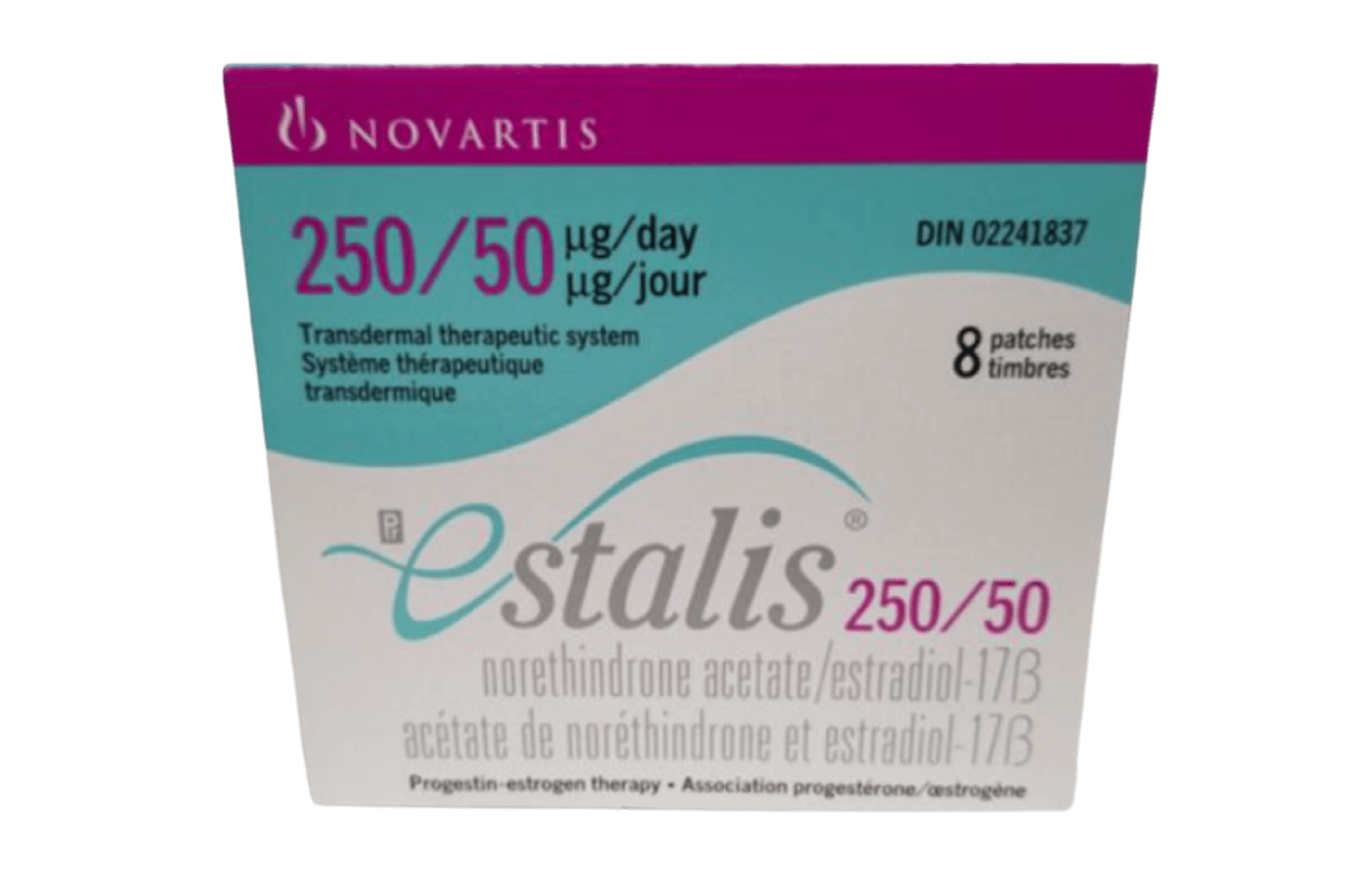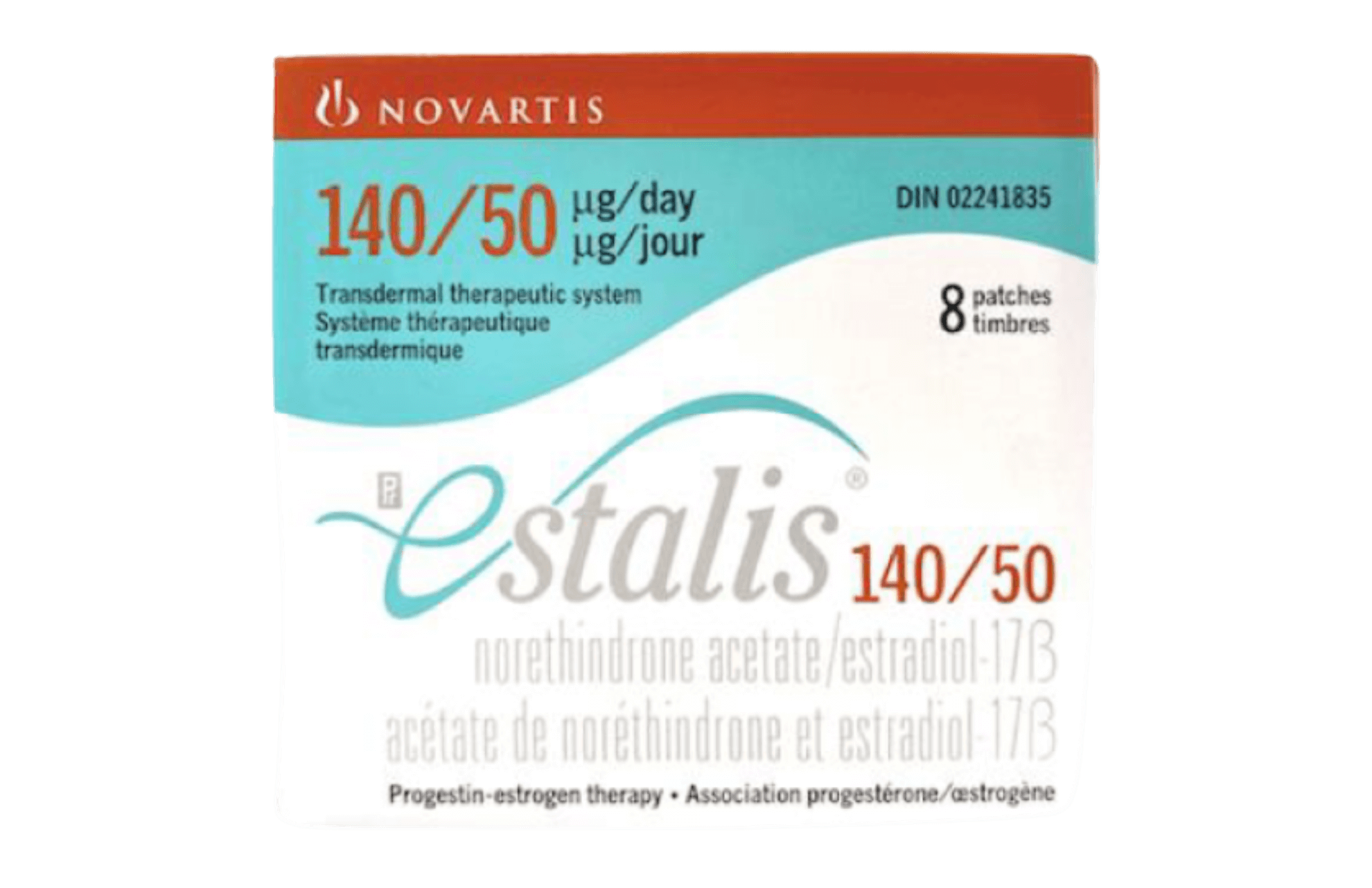This text is for informational purposes only. Please consult a doctor or pharmacist before using any medication.
Read the information leaflet that comes with the medication.
Most people who use Estalis do not experience any adverse side effects. Doctors prescribe this medication because they assess the benefits of such treatment outweigh any likely unwanted effects.
If a sudden allergic reaction (anaphylaxis) occurs after applying the Estalis patch, with symptoms like swelling of the face, tongue, or throat making it difficult to breathe or swallow, or there is wheezing, hives, rash, blistering, or peeling of the skin, remove the patch immediately, and call a doctor or 911 right away, or go to an emergency room immediately.
Some of the side effects that have been reported include mild skin irritation at the patch application site. Other common side effects include breast tenderness, nausea, bloating, headache, mood swings, or slight weight changes. These side effects often improve as the body adjusts in the first few months. Some mild spotting or menstrual-like cramping can occur initially. If the side effects are bothersome or do not subside, a doctor may adjust the dose or suggest ways to manage them.
Although uncommon, serious adverse effects can occur with estrogen–progestin therapy and require prompt medical attention. These include signs of a blood clot in the legs or lungs – for example, sudden leg pain or swelling (especially in the calf), chest pain, or coughing up blood, accompanied by difficulty breathing
Not all side effects are listed here. If these or other unlisted symptoms persist or worsen, consult a healthcare provider or pharmacist.
Estalis is FDA-approved to treat the symptoms of menopause which are caused by a state of estrogen deficiency. Its primary use is to alleviate moderate to severe vasomotor symptoms such as hot flashes and night sweats. These intense heat episodes can disrupt daily life and sleep, and Estalis reduces their frequency and intensity by restoring estrogen levels. Estalis also addresses menopausal genitourinary issues. It relieves vaginal dryness, itching, and burning caused by low estrogen. This improves comfort during sexual activity and eases urinary symptoms like burning during urination.
In some cases, doctors may prescribe Estalis to women who experience premature or early menopause, for example, if the ovaries stop functioning at a younger age. In such situations, replacing estrogen can manage symptoms and support long-term health, including bone health.
Estalis is recognized as a therapy to help prevent osteoporosis in postmenopausal women at high risk of fractures, particularly if they cannot take other bone-specific medications. The estrogen in Estalis helps maintain bone density, which can lower the risk of osteoporosis-related fractures while the treatment is being used.
The general guidance is to use the lowest effective dose for the shortest duration necessary to manage symptoms in order to minimize long-term risks. The patient should promptly inform her healthcare provider if any concerning symptoms or side effects arise.
Note: Estalis is intended for postmenopausal women who still have a uterus. Women who have had a hysterectomy typically use estrogen-only therapy instead. Estalis should not be used during pregnancy. If a woman becomes pregnant while on Estalis, she should stop using it and consult a doctor. Similarly, Estalis is not recommended for mothers who are breastfeeding. The hormones can pass into breast milk and might affect the nursing infant or interfere with milk production. Women of childbearing age typically do not use Estalis, since it is intended for menopause, but it’s still crucial to rule out pregnancy before starting this therapy.














